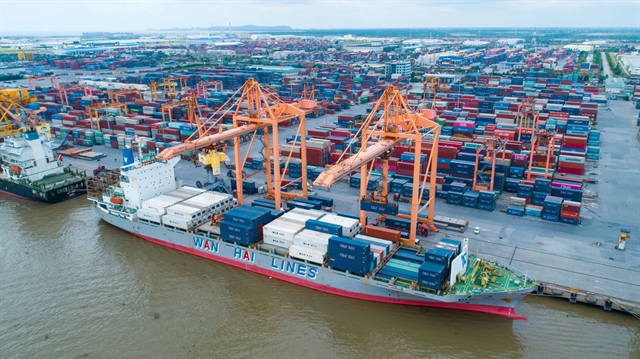Việt Nam’s strong export and import growth, along with a surge in foreign investment disbursement, drove economic performance in the first half of 2025.

HÀ NỘI — Việt Nam’s economy is expected to remain resilient in 2025 and 2026, although growth may slow in the near term due to tariff pressures, according to Asian Development Outlook (ADO) July 2025, released by the Asian Development Bank (ADB) on Tuesday.
ADB said that Việt Nam’s strong export and import growth, along with a surge in foreign investment disbursement, drove economic performance in the first half of 2025.
Foreign direct investment pledges rose by 32.6 per cent, while disbursement increased by 8.1 per cent year-on-year, indicating strong international confidence in the country’s economic prospects.
Public investment disbursement reached its highest level since 2018, at 31.7 per cent of the annual plan and an increase of 19.8 per cent from the same period in the previous year. Front-loading of exports to cope with the tariff uncertainty drove trade performance, which is unlikely to be sustained over the second half of the year.
The trade deal with the US, announced in early July 2025, imposed gradually increasing US tariffs on exports from Việt Nam, which is expected to dampen export demand for the rest of 2025 and into 2026.
The PMI has signalled a slowdown in manufacturing since late 2024. Notwithstanding the heightened risks from tariff uncertainty, the domestic reforms, if effectively and swiftly implemented, can mitigate such risks with strengthened domestic factors.
The projected GDP growth has been revised down to 6.3 per cent in 2025 and 6.0 per cent in 2026. Inflation is forecast to decline to 3.9 per cent in 2025 and 3.8 per cent in 2026.
ADB has also lowered its growth forecasts for economies in developing Asia and the Pacific this year and next year. The downgrades are driven by expectations of reduced exports amid higher US tariffs and global trade uncertainty, as well as weaker domestic demand.
ADB forecasts the region’s economies will grow by 4.7 per cent this year, a 0.2 percentage point decline from the projection issued in April. The forecast for next year has been lowered to 4.6 from 4.7 per cent.
Prospects for developing Asia and the Pacific could be dented further by an escalation of US tariffs and trade tensions. Other risks include conflicts and geopolitical tensions that could disrupt global supply chains and raise energy prices, and a worse-than-expected deterioration in the property market of the People’s Republic of China (PRC).
“Asia and the Pacific has weathered an increasingly challenging external environment this year. But the economic outlook has weakened amid intensifying risks and global uncertainty,” said ADB Chief Economist Albert Park.
“Economies in the region should continue strengthening their fundamentals and promoting open trade and regional integration to support investment, employment and growth.”
Growth projections for the PRC, the region’s largest economy, are maintained at 4.7 per cent this year and 4.3 per cent next year. Policy stimulus for consumption and industrial activity is expected to offset continuing property market weakness and softening exports. India, the region’s second-largest economy, is forecast to grow by 6.5 per cent this year and 6.7 per cent next year, down 0.2 and 0.1 percentage points, respectively, from April projections, as trade uncertainty and higher US tariffs affect exports and investment.
Economies in Southeast Asia will likely be hardest hit by worsened trade conditions and uncertainty. ADB now predicts the subregion’s economies will grow 4.2 per cent this year and 4.3 per cent next year, down roughly half a percentage point from April forecasts for each year.
Bucking the downward trend are economies in Caucasus and Central Asia. The subregion’s growth projections have been raised by 0.1 percentage points for both this year and next to 5.5 and 5.1 per cent, respectively, largely reflecting an anticipated boost in oil production.
Inflation in developing Asia and the Pacific is projected to continue slowing, amid easing oil prices and strong farm output reducing food price pressures. ADB forecasts regional inflation of 2.0 per cent this year and 2.1 per cent next year, compared with its April projections of 2.3 and 2.2 per cent, respectively. — VNS





